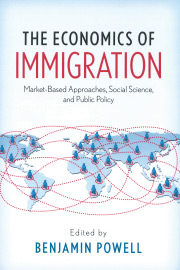Say “Somalia” to most Americans and they will likely have visions of civil war and chaos. While accurate in the early 1990s, these visions have not been the actual situation in Somalia for most of the last decade. Unfortunately, because of yet another international attempt to install a Somali government, these visions are again becoming increasingly accurate.
Somalia has been without a national government since 1991, when Dictator Siad Barre was ousted from power. Somalia plunged into a civil war as rival factions attempted to establish a new government. Interventions by the U.S. and U.N. tended to unite the Somalis against the outsiders, resulting in the famous “Black Hawk Down” episode, and ultimately, the withdrawal of U.S. and U.N. forces.
Once the U.N. withdrew, a relative peace developed in Somalia. Crime and violence persisted, but not at the levels seen during the civil war. Various clan elders, warlords, and Islamic courts had power, but none were strong enough to impose themselves as the new government, and most of the fighting stopped.
Once this relative peace was achieved, the Somalis began to order their affairs and adapt institutions to provide governance, even though they lacked a government. Most of the order was provided by Somalia’s customary legal code, the Xeer, which was interpreted by clan elders and informally enforced, mainly through ostracism. Islamic courts existed, but most had little influence. Islamic law was reserved mostly for matters of divorce and inheritance, while the common law covered everything else.
Although Somalia is still poor, the ordered "anarchy" that has existed since the mid–1990s has actually translated into improved living standards. In conducting research for a new study comparing Somalia’s economy relative to 42 other African countries, my coauthors and I examined 13 different measures, including life expectancy, immunization and disease rates, access to various telecommunications, and access to water/sanitation.
In 2005, Somalia ranked in the top 50 percent in six of our 13 measures, and ranked near the bottom in only three: infant mortality, immunization rates, and access to improved water sources. This compares favorably with circumstances in 1990, when Somalia last had a government and was ranked in the bottom 50 percent for all seven of the measures for which we had that year’s data: death rate, infant mortality, life expectancy, main telephone lines, tuberculosis, and immunization for measles and DTP. Furthermore, we have found that during the last years of Somalia’s government, 1985 to 1990, their performance was deteriorating compared to other African nations as their relative ranking fell in five of these measures. Since their government’s collapse, Somalia has seen its relative ranking improve in four of these measures and deteriorate in only one: infant mortality.
Perhaps most impressive is Somalia’s change in life expectancy. During the last five years of government rule, life expectancy fell by two years but since state collapse, it actually has increased by five years. Only three African countries, Guinea, Gambia, and Rwanda, can claim a bigger improvement. Telecommunications is another major area of success. With a variety of companies operating without burdensome government regulation, Somalia ranks high among African countries in the number of phone lines, mobile phone usage, and access to the Internet. According to The Economist, a mobile phone call in Somalia is “generally cheaper and clearer than a call from anywhere else in Africa.”
In fact, the ordered "anarchy" in Somalia attracted multinational corporations to the country. Coca–Cola, Dole, DHL, and affiliates of General Motors and British Airways, among others, began making investments in Somalia. Unfortunately, recent international efforts at establishing a new government in Somalia are likely to ruin what little economic progress the country has made.
In 2004, the Transitional Federal Government (TFG) was created in exile with U.N. backing. In February 2006 it entered Somalia, and so far, controls only the town of Baidoa.
The Somalis again have united against this attempt by outsiders to force a government on them. Unfortunately, the result has been an increase in the power of the Union of Islamic Courts (UIC), who, since June, has gained control over much of southern Somalia, including the former capital, Mogadishu. An estimated 600 militias have joined the UIC since the TFG moved into Baidoa in February.
Every government of Somalia has exploited the country’s population. International meddling created the TFG and, unintentionally, a more powerful UIC. If either group were to become a true government, the population likely will once again become oppressed. In the meantime, the two groups appear headed back into civil war, which will likely result in the kind of chaos the country has not experienced since 1995.
Prime Minister Gedi of the TFG recently said, “It is totally misguided not to accept the government. The alternative is chaos.” Unfortunately, he’s got it exactly backwards. It is, in fact, the attempts to impose a government on Somalia that create chaos.











